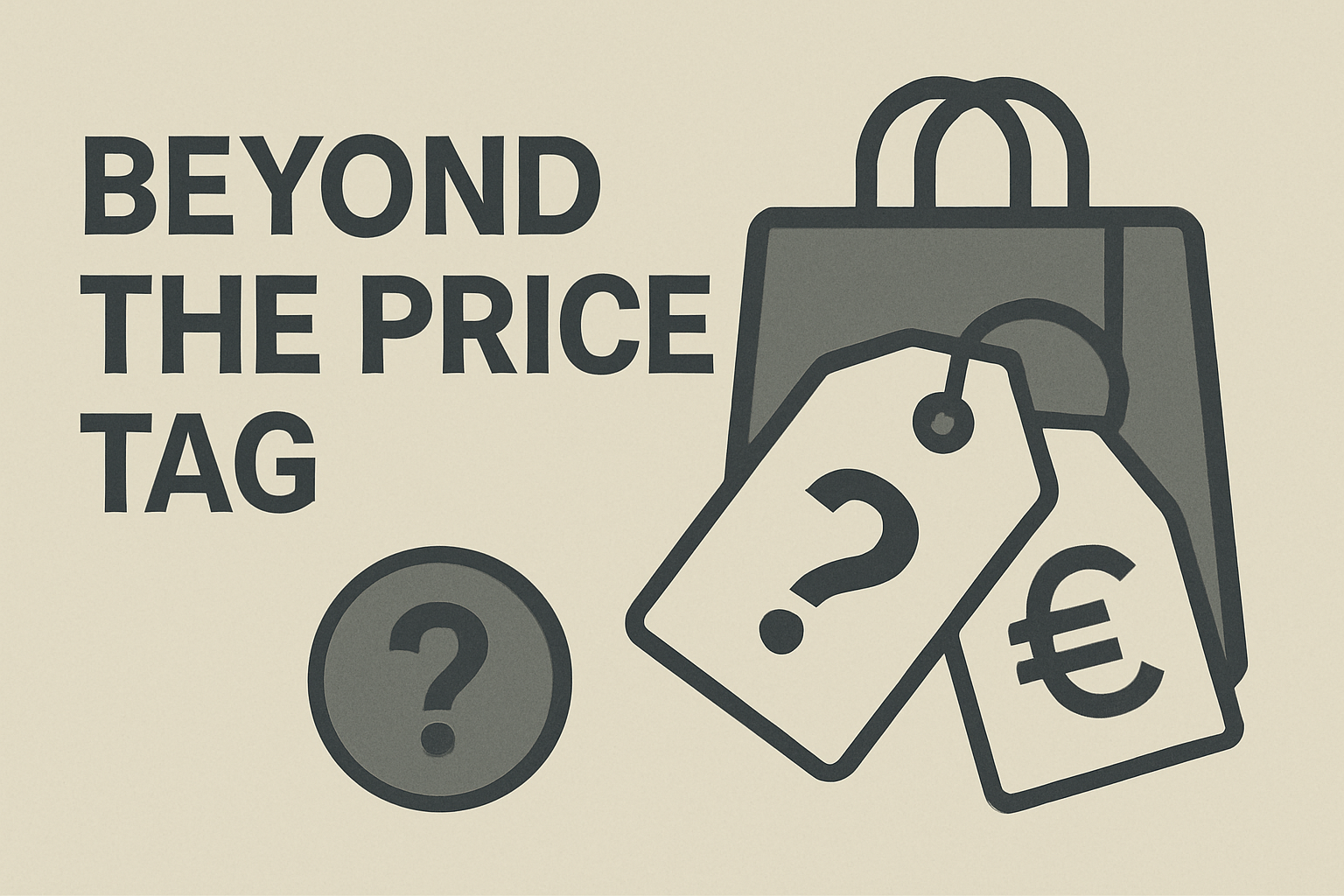7 Savvy Questions to Ask Before Snapping Up That "Deal" in European Stores
In 2025, with inflation still biting and online shopping growing more aggressive, smart shoppers aren’t just looking at price tags. They’re asking sharper questions.

That “limited time offer” blinking on your screen?
It might be a bargain—or it might be bait.

In 2025, with inflation still biting and online shopping growing more aggressive, smart shoppers aren’t just looking at price tags. They’re asking sharper questions.
This guide gives you seven critical checks to run before you buy. It’s how you move from passive consumer to confident, value-driven shopper—starting with the deals you find on [Your Platform Name].
1. Is It a Need or a Now-It’s-Cheap Want?
Ask yourself:
- Would I still buy this at full price?
- Have I looked for this item in the last 30 days?
If the answer to both is “no,” it’s probably impulse, not intention.
Use your platform’s wishlist tool to park the item.
Still want it in a week? Consider it.
2. Is the Discount Real—or Retail Theater?
You see:
“Was €149, now €99!”
But was it ever really €149?
Check:
- Historical price data on your platform or browser plugins
- Competing offers across European retailers
- Cross-border platforms (e.g., FR vs DE vs ES pricing for the same item)
Don’t fall for fake markdowns. Fall for true value.
3. What’s the True Cost per Use?
A €25 sweater worn twice = €12.50 per wear.
A €75 hoodie worn 40 times = €1.87 per wear.
Apply this logic to:
- Fashion
- Kitchenware
- Electronics
- Tools
Use the "compare" feature on your platform to weigh specs, materials, and user ratings—not just price.
Value ≠ lowest price. Value = price ÷ longevity.
4. What’s the Return Policy—and Is It EU-Compliant?
EU law gives you 14 days right of withdrawal for most online purchases.
But here’s the catch:
- Some sellers quietly exclude certain items (like hygiene products or custom goods)
- Cross-border returns may incur shipping fees or currency conversion loss
- Marketplaces vs. direct brands often have different return processes
Check the fine print—before checkout.
5. Will the Warranty Work Where You Live?
Especially relevant with:
- Electronics
- Appliances
- Watches or luxury goods
Ask:
- Is the warranty valid EU-wide?
- Do I need to register it in a specific country?
- Who pays for shipping in case of repair?
If your platform lists warranty info alongside the product, you’ve found a keeper.
6. Is This Product the Latest Model—or a Clever Closeout?
Older models aren’t bad. But you shouldn’t overpay for them.
Examples:
- A 2023 smartphone at 20% off may still cost more than the 2024 budget model with better performance.
- TVs, soundbars, and smartwatches get upgraded annually—last-gen should be priced accordingly.
Use your platform to check release years and flag “end-of-line” tags.
This is where hidden value often hides—but only for the informed.
7. Am I Being Influenced or Informed?
That badge? That timer? That “only 3 left!” warning?
These are psychological nudges, not objective facts.
Spot the signs:
- Countdown clocks = urgency
- Star ratings without verified reviews = manipulation
- Influencer collabs = marketing budget, not product proof
Instead:
- Read customer reviews with photos
- Sort by “lowest rating” first to check for patterns
- Trust platforms that show unfiltered product feedback
Smart shoppers don’t rush. They reason.
Final Thought: Informed Is the New Frugal
Being a smart shopper in Europe today means:
- Asking better questions
- Valuing longevity over hype
- Spotting traps disguised as treats
- Knowing your rights, not just your savings
The next time a deal pops up on [Your Platform Name], don’t just react.
Engage with it like an investor—because every euro saved is one earned.
FAQs
Is it safe to buy from EU stores outside my country?
Yes—thanks to EU consumer protections. But always check return shipping and warranty terms.
How can I know if a deal is actually good?
Use platforms with price history tools, verified reviews, and cross-border comparisons.
Do all sales require urgency to be worthwhile?
No. Real value sticks around longer than a countdown timer.